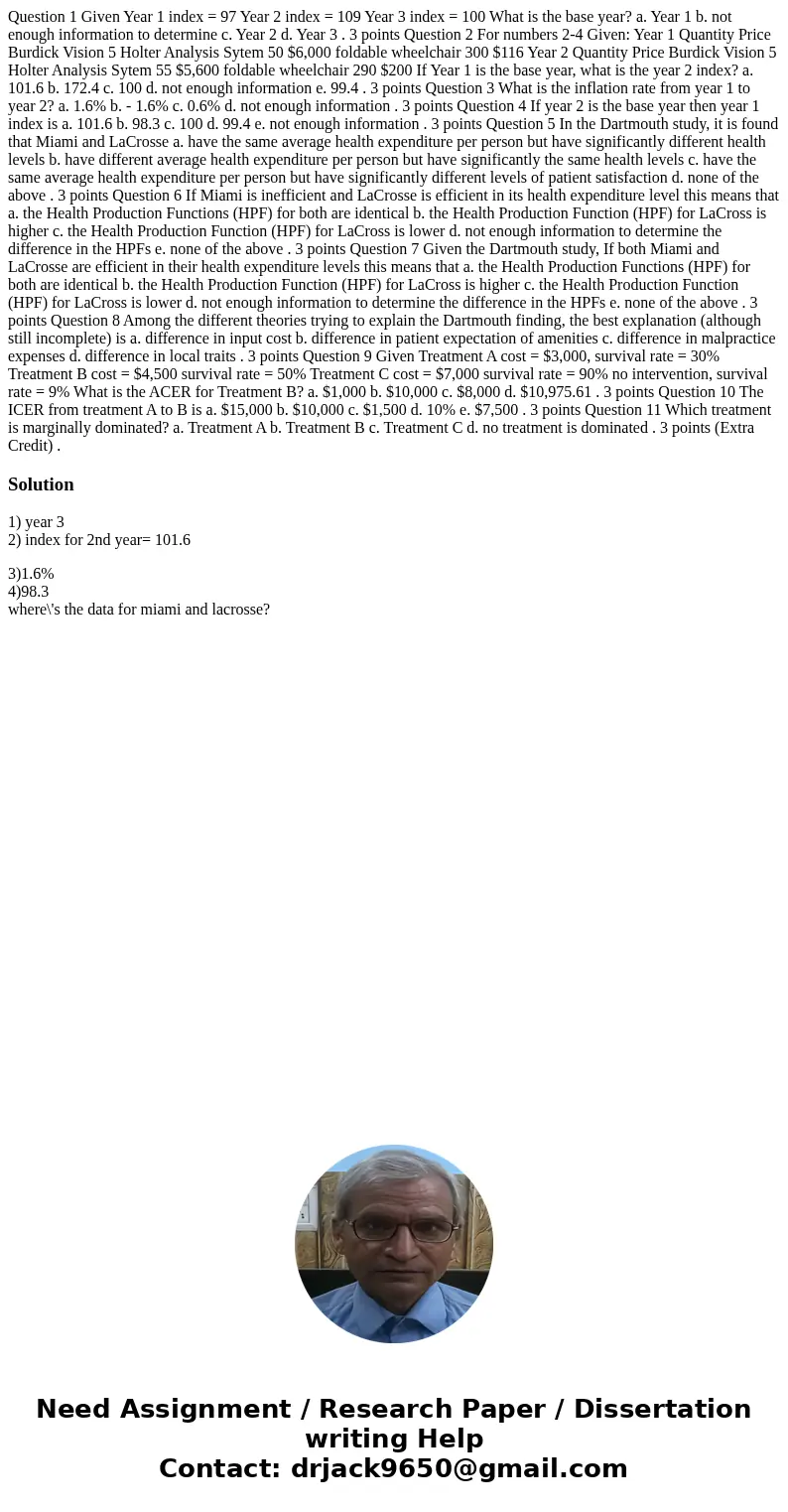Question 1 Given Year 1 index 97 Year 2 index 109 Year 3 i
Question 1 Given Year 1 index = 97 Year 2 index = 109 Year 3 index = 100 What is the base year? a. Year 1 b. not enough information to determine c. Year 2 d. Year 3 . 3 points Question 2 For numbers 2-4 Given: Year 1 Quantity Price Burdick Vision 5 Holter Analysis Sytem 50 $6,000 foldable wheelchair 300 $116 Year 2 Quantity Price Burdick Vision 5 Holter Analysis Sytem 55 $5,600 foldable wheelchair 290 $200 If Year 1 is the base year, what is the year 2 index? a. 101.6 b. 172.4 c. 100 d. not enough information e. 99.4 . 3 points Question 3 What is the inflation rate from year 1 to year 2? a. 1.6% b. - 1.6% c. 0.6% d. not enough information . 3 points Question 4 If year 2 is the base year then year 1 index is a. 101.6 b. 98.3 c. 100 d. 99.4 e. not enough information . 3 points Question 5 In the Dartmouth study, it is found that Miami and LaCrosse a. have the same average health expenditure per person but have significantly different health levels b. have different average health expenditure per person but have significantly the same health levels c. have the same average health expenditure per person but have significantly different levels of patient satisfaction d. none of the above . 3 points Question 6 If Miami is inefficient and LaCrosse is efficient in its health expenditure level this means that a. the Health Production Functions (HPF) for both are identical b. the Health Production Function (HPF) for LaCross is higher c. the Health Production Function (HPF) for LaCross is lower d. not enough information to determine the difference in the HPFs e. none of the above . 3 points Question 7 Given the Dartmouth study, If both Miami and LaCrosse are efficient in their health expenditure levels this means that a. the Health Production Functions (HPF) for both are identical b. the Health Production Function (HPF) for LaCross is higher c. the Health Production Function (HPF) for LaCross is lower d. not enough information to determine the difference in the HPFs e. none of the above . 3 points Question 8 Among the different theories trying to explain the Dartmouth finding, the best explanation (although still incomplete) is a. difference in input cost b. difference in patient expectation of amenities c. difference in malpractice expenses d. difference in local traits . 3 points Question 9 Given Treatment A cost = $3,000, survival rate = 30% Treatment B cost = $4,500 survival rate = 50% Treatment C cost = $7,000 survival rate = 90% no intervention, survival rate = 9% What is the ACER for Treatment B? a. $1,000 b. $10,000 c. $8,000 d. $10,975.61 . 3 points Question 10 The ICER from treatment A to B is a. $15,000 b. $10,000 c. $1,500 d. 10% e. $7,500 . 3 points Question 11 Which treatment is marginally dominated? a. Treatment A b. Treatment B c. Treatment C d. no treatment is dominated . 3 points (Extra Credit) .
Solution
1) year 3
2) index for 2nd year= 101.6
3)1.6%
4)98.3
where\'s the data for miami and lacrosse?

 Homework Sourse
Homework Sourse